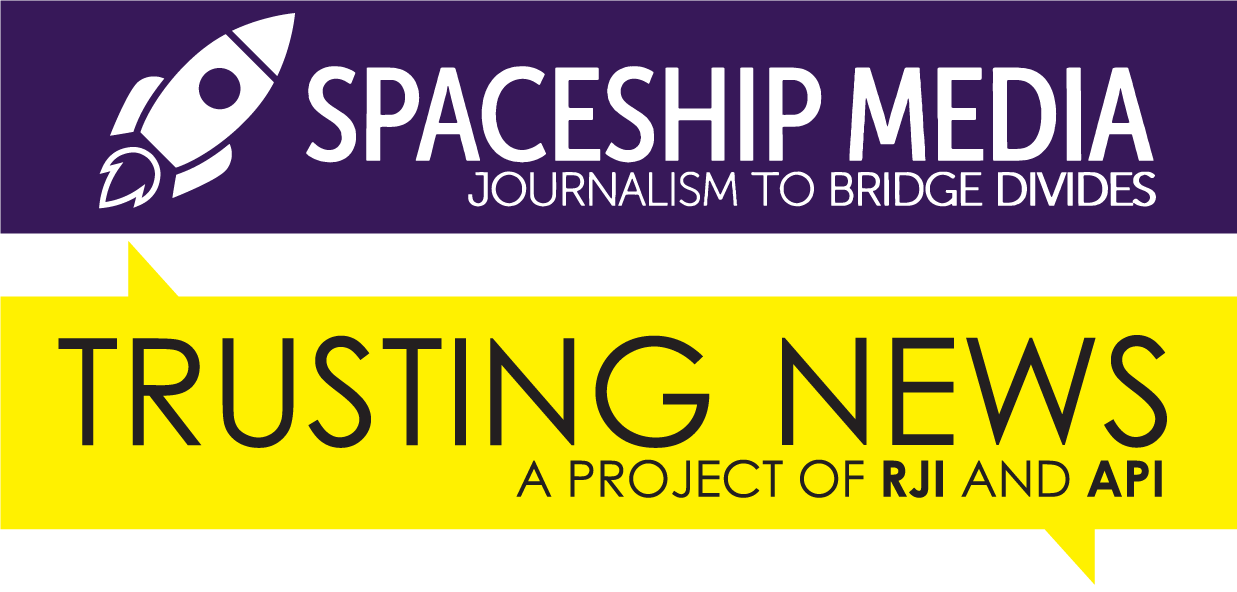Dimensions of Difference: Your Community

YOU
NEWSROOM
COMMUNITY
THE STORY
DIALOGUE
ABOUT
Knowing your community
Newsrooms are very often staffed by people who have different values and views than the communities they cover. Newsrooms, generally speaking, are more white, more affluent, more male and more educated than the communities they serve.
Journalists and editors are also more likely to hold progressive politics and live in urban areas. They are less likely to have a military background and less likely to be religious.
How much do you know about the people you serve? Who are they and how are you alike and different from them? This awareness can help us create reporting that is more useful, relevant, considerate and nuanced.

Exercises to help you know your community
This section has two exercises.
In the first, we invite you to take a look at some of the demographics of the community your newsroom covers.
In the second, we ask you to take a look at how the journalists on your team are alike or different from the people you are creating content for.
Exercise #1
Who makes up your community?
How to use this exercise:
What to Prepare: Have paper or poster board as well as pencils, colored pencils, or markers on hand. Make sure everyone brings a laptop or that you will have about one laptop available for every three people.
When you come together, divide into groups of three. Group people who don’t normally work together or who don’t know one another well.
Have each group go to City-Data.com and drill down into any cities or towns — or even zip codes — that they’re curious about in your coverage area. Ask the groups to make whatever notes they like, and feel free to add their own observations and thoughts about the people who make up your coverage area. Look for the unexpected or the surprising.
Invite the groups to look at the following statistics:
- Median age
- Median household income
- Percent of residents living in poverty
- Race
- Marriage status
- Education rates
- Religion
- For languages spoken, consult Census data here
- For immigration information, consult this database
After about 15 minutes, ask the groups to choose one of the following activities to share something they learned about your community with the larger group:
- Choose one data point or statistic about your community and find a way to visually represent this (for instance, as a map or a chart).
- Choose one data point or statistic and review how it has shown up in the last week or month’s reporting. Write a short summary.
After 25-30 minutes, lay the visual representations and written summaries out on a table (or hang them on a wall) and spend some time letting everyone look over these findings. Make sure to document them for further review.
Exercise #2
Who makes up your newsroom?
How to use this exercise:
What to Prepare: Have everyone complete the Who makes up your community? exercise and bring documentation (or the originals) of the visual representations and written summaries. Share the following reading and the questions in the form of an anonymous poll (You can collect anonymous answers in Google forms, SurveyMonkey, or Slack).
Reading and poll questions: Collectively, journalists often have a lot more in common with each other than we do with the communities we serve. We are also not immune from the current rise in societal sorting, in which we are increasingly surrounded by people we have a lot in common with.
As an industry, it’s clear we’re whiter, more educated and more middle to upper class (by actual salary or by mindset).
We’re also more urban — 22% of newsroom employees live in New York, D.C. or L.A. compared to 13% of the overall workforce.
And while about 7% of U.S. adults are military veterans, just 2% of journalists are.
Hard data is much more difficult to come by on a whole range of societal and cultural factors. We do have some data on things like politics and religion, and it might seem obvious to many of us that as a group, we’re more liberal and more secular than the population overall. Consider also what you might assume about our personal experiences on a topic like gun ownership. While 44 percent of US adults report living in a household with a gun, it would be reasonable to estimate that number to be lower among journalists.
For this exercise, consider how your own experiences — and those of your colleagues — might be different from others in your community.
Think about your own answers to the questions in this anonymous poll:
- How many of you and your colleagues have lived in a rural area or a small town?
- How many of you have lived at a family income that was close to or below the poverty line?
- How many of you have had a full-time job (for more than a summer) that involved manual labor?
- How many of you live within 100 miles of where you grew up?
- How many of you live within 25 miles of your parents?
- How many of you practice a religion regularly?
- How many of you were a parent before the age of 25?
- How many of you lean conservative on at least some issues?
- How many of you hold mainstream conservative views on an issue like abortion, or have close, respectful relationships with people who do?
When you come together, look at your poll results alongside the community demographics you pulled together in the first activity. We all have communities, attitudes and ideas that we naturally understand and others that we have to work harder to understand.
Discuss as a group: What are some key areas where your newsroom and your communities diverge? In what ways are the experiences, challenges and lifestyles of your communities most different from those of your newsroom staff? And how might that bring challenges in covering those communities with accuracy and nuance?
About this guide
Dimensions of Difference is based on a series of workshops conducted by Eve Pearlman of Spaceship Media and Joy Mayer of Trusting News. Dimensions of Difference supports journalists in understanding their views and values, offering strategies for engaging more productively within newsrooms in the service of better journalism.
